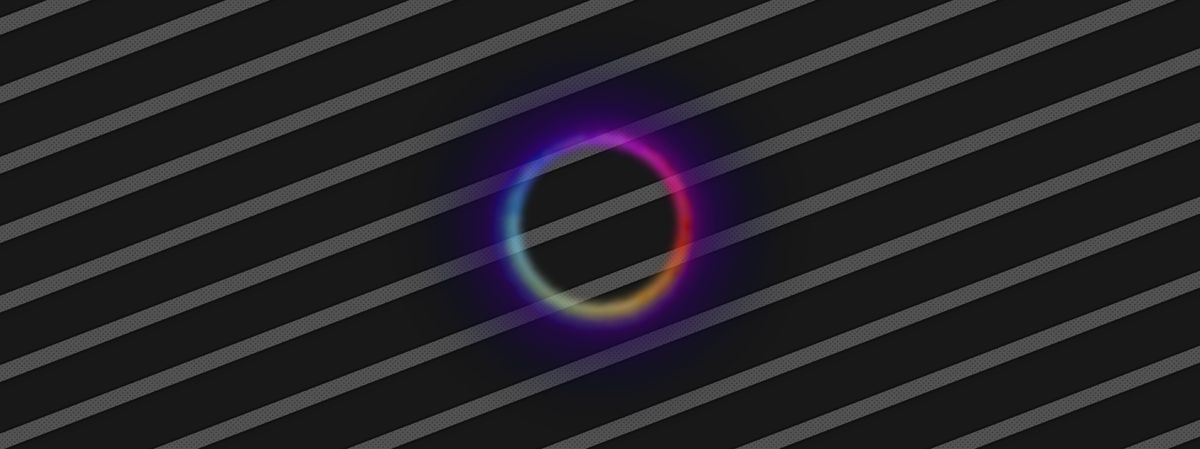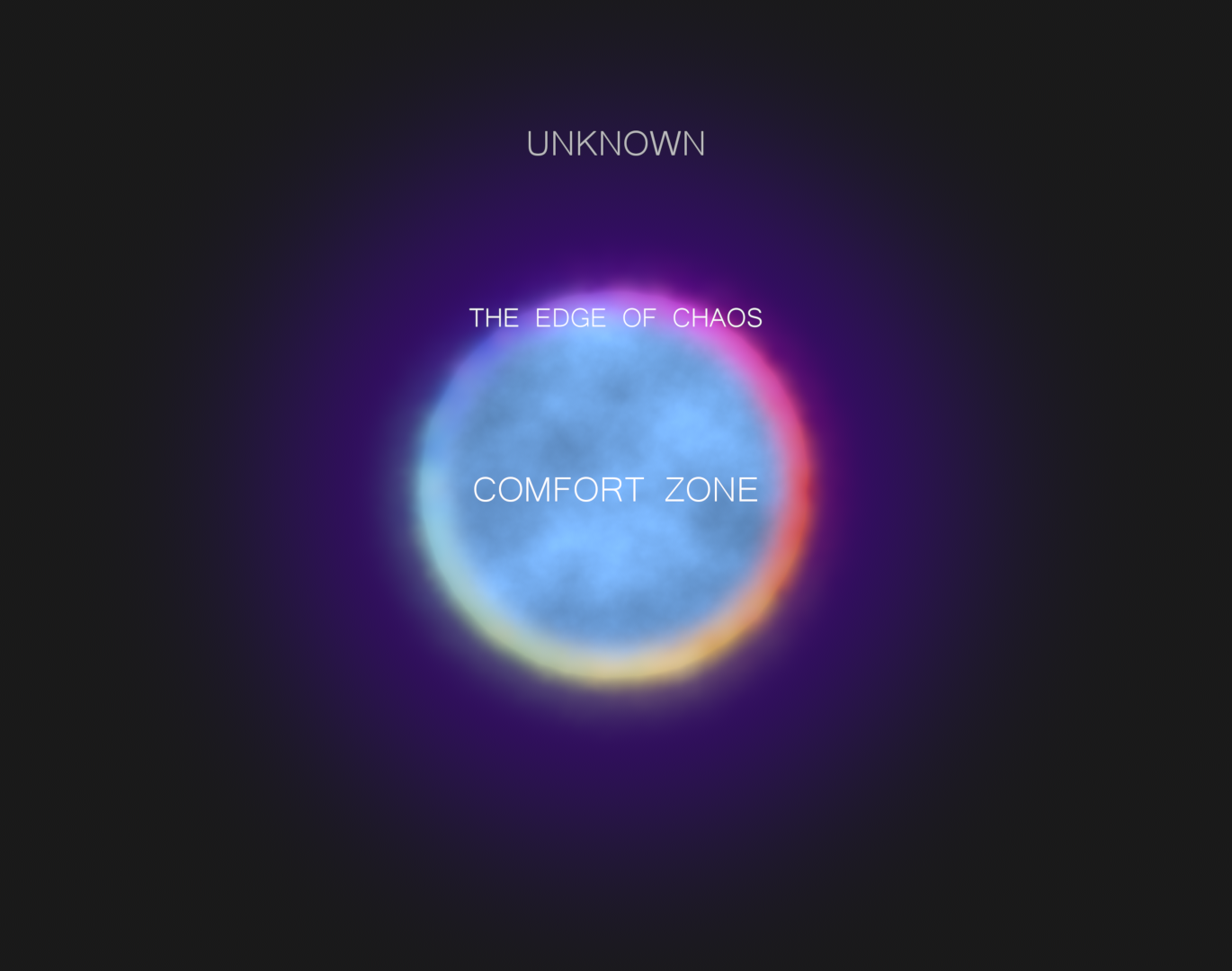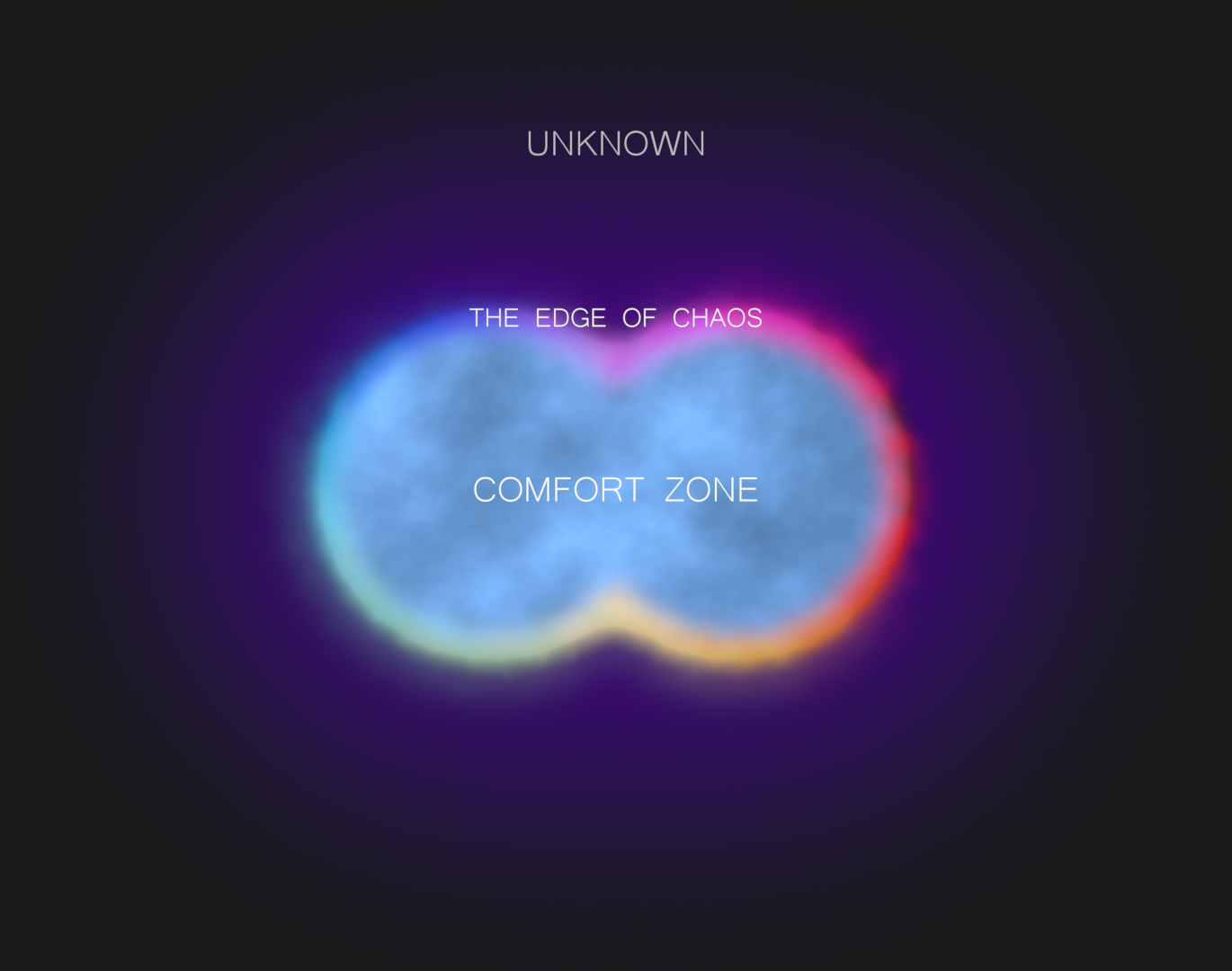The Edge Of Chaos
How to apply a concept from Chaos theory to improve your skill progression…

How to apply a concept from Chaos theory to improve your skill progression.
The Goldilocks Zone
There is a concept in Chaos theory which I think serves as a great analogy to an important part of real life: progress. It’s called The edge of chaos and is a hypothetical transition zone between order and disorder.
This region is fertile for creation and experimentation, for invention and reinvention, and for adaptation and innovation. Here, interspersed and interplaying with established information, the noise of chaos subsides. New structures of information take shape, and order emerges. It’s where growth and progress take place.

Visualising the edge of chaos.
If disorder is the unknown; yet to be explored and organised into something meaningful – order is what we do know and have already categorised. And the things we have a good grasp of fall within our comfort zone. Through evolution, our brains have become hardwired to recognise patterns, and order is comforting because it is predictable. For the same reason, disorder may make us uneasy.
Retreating too far into our comfort zone, though, means we sacrifice progress and innovation for simplicity, stability, and predictable repetitiveness. It is more about maintaining what is, than evolving towards what is to become.
Venturing too far out into the unknown and enveloping ourselves in disorder, on the other hand, means we encounter too much complexity/flexibility coupled with little to no sense of direction. Structures and focus dissipate, and not much of use is accomplished out there.
At the edge of chaos, where the two opposing entities meet, we find a Goldilocks zone. It’s where creative ideas materialise; where we learn something new; or where we build upon something we already know.
Expanding The Comfort Zone
We are able to expand our comfort zone from the edge of chaos, because we have a firm point of reference behind us to help with navigating the unknown ahead. By gradually absorbing and digesting pieces of information from the chaos and arranging them into useful knowledge, we build our comfort.
Take learning a new language, for example. You could learn 100 words and practice them every day until you get super comfortable with writing and pronouncing them. However, if you didn’t continue progressing your learning, those words alone wouldn't actually get you very far. Communicating in a new language requires constant expansion of your comfort zone.
You would have to read and listen to native sentences and conversations, piece together context and structure, learn the rules and irregularities, and expand your vocabulary to be able to truly use the language. This takes effort, almost like you are mentally stretching your brain. It’s the same with learning how to play an instrument. Or learning to code. Or becoming a better compositor.
In any area you want to progress, you have to push yourself out of your comfort zone and into the edge of chaos. It’s a better place for learning, and for fostering innovative ideas.
Cross-pollination
That’s not to say progression or innovation can’t happen in the comfort zone. It is just less likely. There is a way to increase your odds, though. If you are skilled in more than one area and you discover a way of connecting them, you may find that the sum is greater than its parts. You’ll be able to operate deeper within the comfort zones of each skill, while still creating something new and unique.
As a simple example, combine woodworking with a bit of engineering, and you get the motorised standing desk.

Cross-pollination of skill sets. Innovation happens in the intersection between skills.
This happens naturally in teams, where people with different skill sets come together and share ideas and information. Part of one person’s unknown may very well be someone else’s comfort zone.
The Path Forward
How can musician X have the confidence to perform live in front of 20,000 people? I get nervous presenting for 20 people on a Zoom call, you might say.
Well, they didn't start out performing for 20,000 people. Likely, they performed for their parents and friends as children. Then, in school plays. Open mic nights. Small gigs. Then, bigger and bigger concerts – until they now can perform for huge audiences without letting their nerves get to them.
It takes time and effort to expand your comfort zone. And you don’t have to sprint to the edge of chaos right away; you can build up to it. The important thing is to dedicate time, and to be consistent. Set aside time daily or weekly to work on your skill, in focussed practice. If you want to write a book, you could for example set aside one hour every morning to write. It does take sacrifice – you may have to get up one hour earlier than usual to do it, or you may have to browse social media for one hour less each day.
You don’t have to stay at the edge of chaos around the clock, though. It takes work and can be frustrating at times. Weave in and out of the edge and take breaks to charge up your mental battery. Just don’t stay in your comfort zone for too long. Momentum, or lack of it, can make or break progress.
As you progress, regularly reflect on what you have accomplished, and course-correct when needed. It can be easy to put the blinders on and accidentally veer off course, going down a path you didn’t intend to. (Look out for happy accidents, though!).
Lastly, engage and collaborate with others. Symbiosis can be powerful. While each of you stretch your comfort zones, suddenly you may find an overlap of skill sets which leads to a great idea for a new product, a new technique, or a new point of view.
I hope you found this article useful. For more productive inspiration, see Productivity.



